Microsoft invites everyone to get acquainted with the features of the server platform using trial versions of Windows Server 2019 or Windows Server 2016 (StandardEvaluation or DatacenterEvaluation). By filling out a short form, you can download Windows Server 2019 on-premises Free Trial or Windows Server 2016 Evaluation for free here. After installing Windows Server Evaluation, you have 180 days to test its capabilities. During this time, the full functionality of Windows Server 2019/2016/2022 is available to you.
When using the Evaluation version of Windows Server, the desktop displays the current build and the time until the end of the grace period (Windows License valid for 180 days).
At any time, you can display the time until the end of the grace period for an evaluation version of Windows Server:
Slmgr /dli
Name: Windows, ServerStandardEval edition Description: Windows Operating System, TIMEBASED_EVAL channel License Status: Licensed Timebased activation expiration: xx min (xx days)
You can see the product name, description (TIMEBASED_EVAL channel), and activation expiration time.
slmgr /rearmYou can extend your Windows Server trial period up to 5 times. Thus, the maximum lifespan of Windows Server Free Trial can be extended to 3 years = 180 days * 6. However, under the terms of using Evaluation versions of Microsoft, you shouldn’t use the trial version for commercial purposes or productive tasks.
After the expiration of the trial period, Windows Server starts requiring activation and shutting down every hour with the following events in the Event Viewer:
Log Name: System
Source: USER32
Event ID: 1074
Description:
The process C:\Windows\system32\wlms\wlms.exe Server1 has initiated the shutdown of computer Server1 on behalf of user NT AUTHORITY\SYSTEM for the following reason: Other (Planned)
Reason Code: 0x80000000
Shutdown Type: shutdown
Comment: The license period for this installation of Windows has expired. The operating system is shutting down.
Or:
Log Name: Application
Source: WLMS
Event ID: 100
Description: The license period for this installation of Windows has expired. The operating system will shut down every hour.
The desktop background will turn black, and a notification “Windows Licenses is expired” will appear in the lower right corner.
This article should help you if you performing productive tasks in the evaluation version of Windows Server and want to upgrade it to full Windows Server edition while keeping your data and without the need to completely reinstall the operating system.
If you try to specify the KMS, Retail, or MAK product key on Windows Server Evaluation edition, the following warning appears: “This edition cannot be upgraded”.
When you try to install the retail key using the slmgr.vbs tool (slmgr /ipk xxxxx-xxxxx-xxxxx-xxxxx-xxxxx) you will receive the error:
Error: 0xC004F069. On a computer running Microsoft Windows non-core edition, run ‘slui.exe 0xC004F069’ to display the error text.
If you run the specified command, a description of the error will appear:
The Software Licensing Service reported that the product SKU is not found.
But not everything is so sad :).
You can use DISM to make sure that you are using the Windows Server Evaluation edition. Open an elevated command prompt and execute the command:
DISM /online /Get-CurrentEdition
As you can see, the Current Edition line indicates that the current Windows version is — ServerStandartEval.
Get the list of Windows Server editions to which you can upgrade your current Eval edition:
DISM /online /Get-TargetEditions
Editions that can be upgraded to: Target Edition : ServerStandard Target Edition : ServerDatacenter
As you can see, the current ServerStandardEval edition has been upgraded to the following Windows Server 2016 / Windows Server 2019 editions: ServerDatacenter or ServerStandard.
Upgrade Restrictions for Windows Server Evaluation
Here are some upgrade restrictions that you need to know before converting Windows Server Evaluation to the full edition:
- You cannot upgrade a server with an Active Directory Domain Service domain controller role. It will first have to be demoted to a member server (check that FSMO AD roles are not running on this DC, transfer them to other domain controllers if necessary);
- If NIC Teaming is configured on the server, it must be disabled before upgrading;
- Windows Server Eval Datacenter cannot be upgraded to Windows Server Standard Full. First, you need to upgrade your edition to Windows Server Datacenter Full, and then use a little trick to downgrade the Windows Server edition (check the link at the end of the article);
- You can convert both the full GUI version of Windows Server and the Windows Server Core (converting the trial version of Server Core is supported starting from the release of Windows Server 2016 14393.0.161119-1705.RS1_REFRESH).
Windows Server 2016: Converting Evaluation to Licensed Version
To upgrade Windows Server Evaluation to a full version, you need to use the public KMS (GVLK) key for Windows Server 2016. The conversion is performed via the command prompt using the built-in DISM tool. For example, to upgrade your Eval edition to the Retail version of Windows Server 2016 Standard, use the command:
dism /online /set-edition:ServerStandard /productkey:WC2BQ-8NRM3-FDDYY-2BFGV-KHKQY /accepteula
If you specify your retail or MAK key instead of a public GVLK key in the DISM command, an error will appear:
Error 1168 The specified product key could not be validated. Check that the specified product key is valid and that it matches the target edition.
Always use the Microsoft GVLK key when upgrading the Windows Server edition. You will later replace it with your own product key.
DISM /set-edition command, it hangs by 10%. In this case, we recommend you find and stop the Software Protection Service (Stop-Service sppsvc -Force) and disable Internet access (you can even disconnect the Ethernet LAN cable).After you run this command, wait for the message Command completed successfully (in some cases it may take several hours!!!). After that restart your server and make sure you have a full Standard edition installed.
winver.exe
To upgrade Windows Server 2016 Eval to the Datacenter edition, you need to use another GVLK key. The command will look like this:
DISM /online /Set-Edition:ServerDatacenter /ProductKey:CB7KF-BWN84-R7R2Y-793K2-8XDDG /AcceptEula
If a KMS server is deployed in your local network (What is Volume KMS activation?), you can use it to activate your Windows Server OS with the following commands:
slmgr /ipk WC2BQ-8NRM3-FDDYY-2BFGV-KHKQY (this is the GVLK key for Windows Server 2016 Standard, another product key is used for Datacenter, it is listed above)
slmgr /ato
If there is no KMS server, you can specify your MAK or Retail product key for Windows Server and activate the OS as usual: via the Internet or by phone.
Remove the current key:
slmgr.vbs /upk
slmgr.vbs /cpky
Enter your MAK or retail product key:
slmgr.vbs /ipk xxxxx-xxxxx-xxxxx-xxxxx-xxxxx
Activate a Windows Server instance:
slmgr.vbs /ato
Windows Server 2019: Upgrade Evaluation to Full Version
To convert Windows Server 2019 EVAL to a full edition, you need to use the GVLK (KMS) keys for Windows Server 2019. You can upgrade Windows Server 2019 edition the same way.
Convert Windows Server 2019 Evaluation to Windows Server 2019 Standard:
dism /online /set-edition:ServerStandard /productkey:N69G4-B89J2-4G8F4-WWYCC-J464C /accepteula
In order to convert Windows Server 2019 Evaluation to Windows Server 2019 Datacenter edition:
dism /online /set-edition:ServerDatacenter /productkey:WMDGN-G9PQG-XVVXX-R3X43-63DFG /accepteula
Confirm the command, restart the server. After rebooting, make sure your Windows Server Eval edition is converted to full retail.
Windows Server 2022: Converting Evaluation to the Retail Edition
Although the official RTM version of Windows Server 2022 has not yet been released, Microsoft has already published the public KMS client setup keys (GVLKs) for this OS version.
The command to convert Windows Server 2022 Evaluation edition to Standard:
dism /online /set-edition:serverstandard /productkey:VDYBN-27WPP-V4HQT-9VMD4-VMK7H /accepteula
Convert eval instance to Windows Server 2022 Datacenter:
dism /online /set-edition:serverdatacenter /productkey:WX4NM-KYWYW-QJJR4-XV3QB-6VM33 /accepteula
Possible DISM errors:
The current edition cannot be upgraded to any target editions— you are trying to convert the Datacenter edition to Standard. This upgrade way is not supported;There is an unofficial way to downgrade Windows Server edition from Datacenter to Standard.
Error: 50. Setting an Edition is not supported with online images— Most likely, your server has an Active Directory Domain Controller role (AD DS) deployed. Converting of Windows Server edition on a DC is not supported;This Windows image cannot upgrade to the edition of Windows that was specified. The upgrade cannot proceed. Run the /Get-TargetEditions option to see what edition of Windows you can upgrade to— the error appears if you try to convert Windows Server Evaluation Datacenter to Standard. You cannot upgrade Eval Datacenter to Standard. You need to convert the ServerDatacenterEval edition to ServerDatacenter. Specify the KMS key for Windows Server Datacenter edition in the DISM command

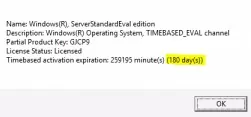

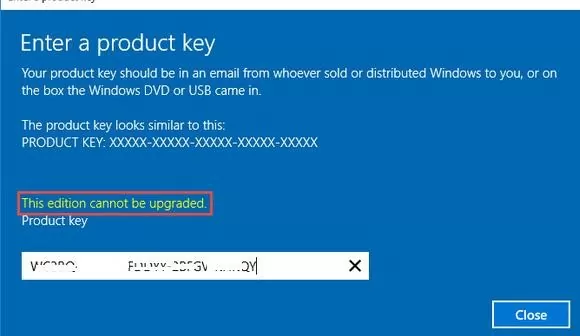
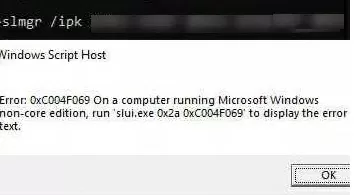
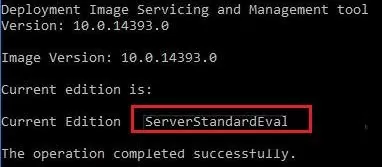

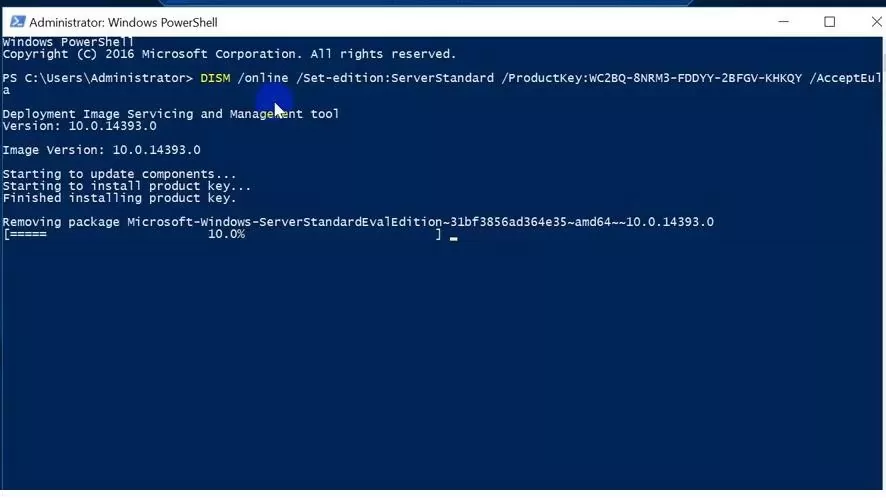

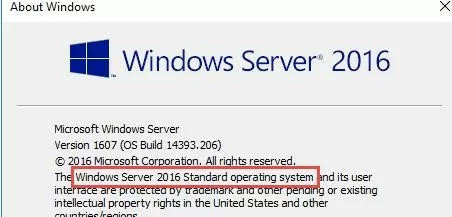
31 comments
Why can’t the GUI method be made to function correctly?
Today you can upgrade Windows Server edition only through CLI. Maybe this will be fixed in the next Windows Server build (1803)….
Your screenshot shows ‘Removing Package..10%’ (set-edition) and your next instruction is to restart machine AFTER the command has been ‘run’. Does this mean immediately, at 10%, or waiting for completion?
Ah, my machine was waiting on 10% for ages (hence the question), but it has finally completed (typical MS progress bar!). I will continue to post this in case someone else has the same doubt (perhaps you could alter the step to say to wait until it completes/100%).
Also, thank you. It appears to have worked for me (virtual machine for eductional purposes).
Would you expect the same procedure to work for Server 2012?
Of course, you need to wait for the complete of dism /online /set-edition command. Only after that you must reboot the server.
Thanks for your comment. I updated the description in the article.
In Windows Server 2012, you can also perform the upgrade correctly, but you need to use the appropriate GVLK key.
I ran the upgrade and its been more than 2 hours still at 10%.. How long should I wait?
This worked! Thanks
Can I convert the cmd version? I bought the standard edition to learn but got it in cmd mode.
Thank you very much, this saved a lot of work after a project was fully implemented over an evaluation version by a contractee and I got the job to activate it; somehow, this time, the Microsoft phone support was not able to find anyone who knew this solution, at least in time, and your article worked quite well.
Thanks. Very useful.
It´s so frustrating 🙁
I installed the 2016 datacenter core eval version (14393.0.161119-1705). After we bought the retail keys it´s not possible to convert to the full version and I have to reinstall everything (Server Cluster with Storage Spaces Direct). Lost three days work only because MS has WRONG informations on their site.
This information is wrong:
“For releases of Windows Server 2016 prior to 14393.0.161119-1705.RS1_REFRESH, you can only perform this conversion from evaluation to retail with Windows Server 2016 that has been installed by using the Desktop Experience option (not the Server Core option). Starting with version 14393.0.161119-1705.RS1_REFRESH and later releases, you can convert evaluation editions to retail regardless of the installation option used.”
Source:https://docs.microsoft.com/de-de/windows-server/get-started/supported-upgrade-paths#span-data-ttu-id26ee3-165konvertieren-einer-aktuellen-evaluierungsversion-in-eine-aktuelle-verkaufsversionspanspan-classsxs-lookupspan-data-stu-id26ee3-165converting-a-current-evaluation-version-to-a-current-retail-versionspanspan
DISM /online /Get-CurrentEdition
ServerDatacenterEvalCor
DISM /online /Get-TargetEditions says this version can´t be converted.
Even with the current newest eval version it´s not possible to concert the datacenter core version!
Thanks. Very useful.
Thanks. Very useful…
Thanks for the useful tips. In case it saves anyone some time, I can confirm that upgrading from Server 2019 Core Eval to Server 2019 Core Standard-or-datacentre fails, and the workaround that I had hoped to pull (install the GUI, do the Edition upgrade, strip the GUI out again) has also had the door slammed in its face by Microsoft apparently yanking this capability out of Windows when I wasn’t looking…..
https://cloudblogs.microsoft.com/windowsserver/2017/04/05/switching-between-windows-server-2016-server-core-and-desktop-experience/
So far as I can tell, the only path to get from EVAL-Core to Licensed-Core is through a rebuild.
Thanks very much for a very useful artical – just one thing I wanted to comment on – You mention above that a Windows domain contoller must be demoted first. Somehow I neglected to read that and performed this on a Domain controller running Windows Service 2016 Std Eval and it successfully ‘upgraded’ to Windows Server 2016 Standard.. so far with seemingly no detrimental effect on the domain – I panicked a bit after I read this a second time and spotted that limitation so perfomed a number of checks on the AD and systems logs etc. and all seems fine.
Same panick here at first. ToDo -> Convert Eval to Full on a Domain Controller. That is not supported! From elevated cmd prompt the installation of productkey was less then one hour. Hangs a bit at 10%. At first reboot of Domain Controller, the DC was incorrectly connected to private network instead of domain network. After gpupdate and a few (2x) restarts everything seems fine again. Sidenote: I did however had to reactivate Windows also through the GUI. Checked Winver.exe and seems fine.
Typo found in the command:
dism /online /set-edition:ServerStandard /productkey: N69G4-B89J2-4G8F4-WWYCC-J464C /accepteula
There can be no space between /productkey: and the key. It should instead read:
dism /online /set-edition:ServerStandard /productkey:N69G4-B89J2-4G8F4-WWYCC-J464C /accepteula
I fixed the command. Thanks!
Many thanks for a very useful article. I was about to reinstall but your article saved me from all the wasted time that would have involved.
Hi,
Thanks for this topic. I successfully applied this guide to an AD DS on Windows server 2019 without having the necessity to uninstall the role and demote the DC.
No differences between a server with AD or not. It was a great joy for me !
What about Domain controller ? if I need to upgrade the windows server 2016 with domain controller /Active Directory role ?
So if I donate it from the replication DCs node am I need to delete all it’s metadata ,, or only remove the role and activate it and then install the role again.
BTY, I have two nodes DC01, DC02 ? your kind help is highly appreciated.
1) First, demote your DC02 to a domain memeber server, remove ADDS role, upgrade Windows Server version according to this guide. After reboot, install the ADDS role and promote server to a domain controller.
2) Check for errors in ADDS, DNS, and replication service.
3) Move the FSMO roles from DC1 to DC2
4) Then perform steps 1,2 for DC1.
dism /online /Set-Edition:ServerStandard /ProductKey:N69G4-B89J2-4G8F4-WWYCC-J464C /AcceptEula
Deployment Image Servicing and Management tool
Version: 10.0.17763.1282
Image Version: 10.0.17763.1432
Starting to update components…
Starting to install product key…
Finished installing product key.
Removing package Microsoft-Windows-ServerSolutionEdition~31bf3856ad364e35~amd64~~10.0.17763.1
[==========================100.0%==========================]
Error: 14081
An error occurred while operating system components were being updated. The upgrade cannot proceed.
For more information, review the log file.
The DISM log file can be found at C:\Windows\Logs\DISM\dism.log
Try to use the “DISM /Online /Cleanup-Image /CheckHealth” to check your image health (https://woshub.com/dism-cleanup-image-restorehealth/)
Thanks, Admin!! for the article
When i perform this tasks it stuck at 10% tried multiple times restarting server but issue remain same. Please help
I have tried with the GVLK key and also tried with the VLSC key nothing seems to work. it hangs at 10%
This worked! Thanks
Great article, big thanks !
After a couple tries, de-activating the network card really did the trick. I was starting to feel uneasy thinking how it took 3 whole days for our software vendor to install their product and configure it fully, just to get stuck with the activation afterwards…
Super Artikel, hat mir geholfen, FiBu server ist jetzt aktiviert. Danke.
Hi, this works! “Stuck” on 10% but it finished in about 30 minutes! Thanks!
Anyone got an idea why i can’t upgrade to Standard version:
dism /Online /Get-Current Edition
Tool zur Imageverwaltung für die Bereitstellung
Version: 10.0.17763.1697
Abbildversion: 10.0.17763.1757
Aktuelle Edition:
Aktuelle Edition : ServerStandardEval
dism /Online /Get-TargetEditions
Tool zur Imageverwaltung für die Bereitstellung
Version: 10.0.17763.1697
Abbildversion: 10.0.17763.1757
Aktuelle Edition:
Aktuelle Edition : ServerStandardEval
Regarding upgrading Domain Controllers. I’m running Windows Server 2022, fully patched. It is a DC. I was upset when I read that the upgrade won’t work on a DC, but I tried it anyway. Worked! So this restriction seems to have been removed. Specifically, I upgraded Standard Eval to Standard using an OEM key that I purchased. Actually I did this on 4 servers, two of which were full DCs and two of which were read-only DCs. Worked perfectly on all four.